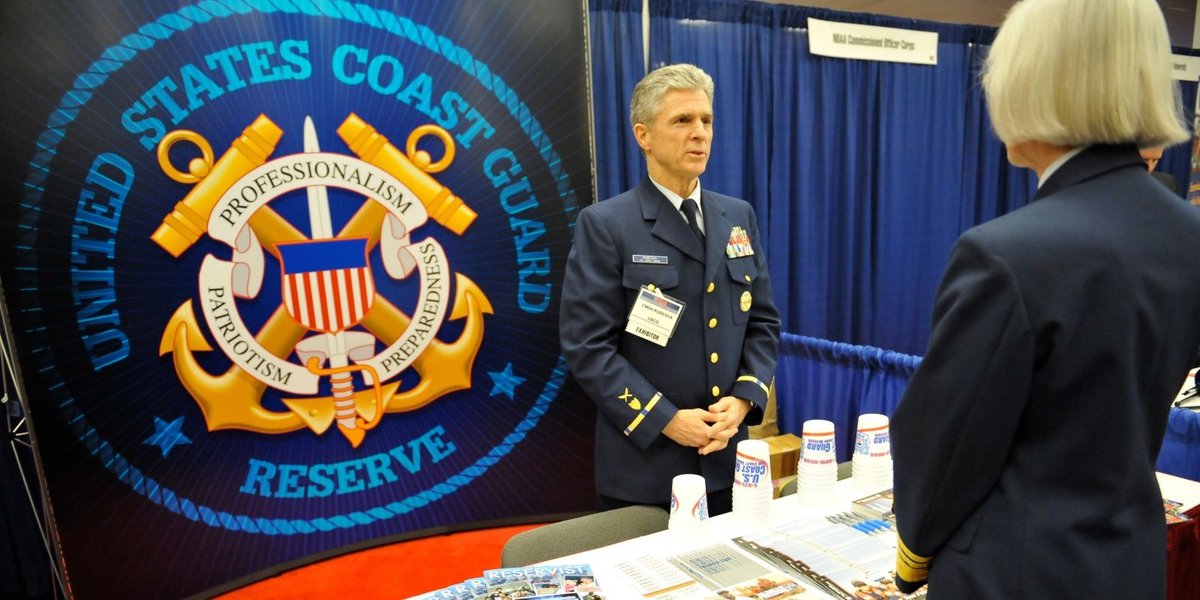EVERYTHING THERE IS TO KNOW ABOUT THE COAST GUARD RESERVE
By Miriam Rixon

Advertisement
The United States Coast Guard Reserve has an 80-year-long history of protecting our nation's waterways and shorelines in times of both conflict and peace. They are a small but mighty U.S. military reserve branch consisting of over 7,000 reservists, or “coasties,” as they like to call themselves. In terms of active duty vs reserve responsibilities, the Coast Guard Reserve is different and does not require a full-time commitment, rather reservists work two days a month and two weeks a year.
Here are a few interesting facts about the Coast Guard Reserve.
Power to the People: The Origin of the Coast Guard Reserve
Related: Herman the Cat Slayed Foes Aboard U.S. Coast Guard Ships When the Coast Guard Reserve was originally established on June 23, 1939, it was a civilian volunteer reserve tasked with promoting maritime safety, law compliance assistance, and supporting active duty Coast Guard forces. The invention of the single-operator motorboat and the outboard engine in the 20th Century drew American citizens to boating as a classic summer recreational activity. This inevitably led to an uptick in boating accidents and calls for assistance for the United States Coast Guard to deal with. The Coast Guard, however, had bigger fish to fry and so in 1939, the Coast Guard Reserve Act was passed by Congress which allowed volunteers to support USCG missions, excluding those that required direct legal or military involvement.The United States Coast Guard Auxiliary
On February 19, 1941, Congress passed an act that restructured the Coast Guard Reserve. The Coast Guard now has two reserve forces. The USCG Reserve was renamed to become the United States Coast Guard Auxiliary, which continued to carry out the duties of the previous Coast Guard Reserve, and a new military branch was introduced which forms the Coast Guard Reserve as we know it today.Advertisement
The Coast Guard Reserve in World War II
More than 92% of the Coast Guard’s 214,000 members who served during the Second World War were Coast Guard reservists.Motto: “Semper Paratus”- Always Ready
The Coast Guard’s motto “Semper Paratus,” had a somewhat mysterious origin. No one knows who or what to credit for its existence. One theory is that Capt. Francis Saltus Van Boserck, more commonly known as Captain Van, wrote the words to the “Semper Paratus” marching song for the United States Revenue Cutter Service (the Coast Guard’s precursor) in 1922. Another theory is that The New Orleans Bee referred to the USRC Ingham as “Semper Paratus” after it was the first US warship to engage a Mexican warship in combat in 1836. Regardless of its origin, the motto “Semper Paratus” stands tall, true, and proud in its description of a military branch that is on call 24/7, 365 days a year. Suggested Read: The Veteran’s Complete Guide to GI Bill BenefitsThe Coast Guard Women’s Reserve: SPARS
The Coast Guard Women’s Reserve ranks were filled with mothers, daughters, sisters, wives, and girlfriends--women who couldn’t sit by waiting for the dreaded telegram. On November 23, 1942, Congress passed legislation that created another branch of the U.S. Coast Guard, the Coast Guard Women’s Reserve, which allowed for more men to be deployed at sea and more troops on land. Fun fact: The Coast Guard Women’s Reserve was nicknamed SPARS, which is an abbreviation of the official motto of the United States Coast Guard. While SPARS was officially disbanded in 1946, the legacy of the women that served and contributed to the war effort lives on and paved the way for future women in the United States Military.Advertisement
The Coast Guard Reserve Seal
Designed fairly recently in 1991, the seal of the Coast Guard Reserve, while inspired by the Coast Guard Seal, is entirely different. The seal has classic red, white, and blue colors along with gold which symbolizes achievement and excellence. The seal depicts crossed anchors that support a shield (adapted from the Coast Guard seal) and a sword that symbolizes defense and the reserve’s military heritage.Coast Guard Reserve Requirements: So How Do You Join The Coast Guard Reserve?
If you’ve been reading this article and thinking, “Wow, I really want to join the Coast Guard Reserve. How do I sign up?”, look no further. The average Coast Guard Reserve pays $85,672 a year. To be a Coast Guard Reserve officer you have to be a citizen of the United States of America or a resident alien between the ages of 17 to 40. You must have a high school diploma, although GEDs are accepted in certain rare circumstances. You can not have more than three dependents. Along with the above-mentioned qualification criteria, any person applying to join the Coast Guard Reserve must pass the Armed Services Vocational Aptitude Battery (ASVAB) test and a military entrance medical exam. While the Coast Guard Reserve age limit and the ASVAB test are important criteria you have to meet, the whole person evaluation which considers your attitude, professionalism, physical abilities, and work ethic is equally important and can make or break your application status. So make sure you bring your best self to the interview! Read Next: Admiral Linda Fagan Named First Woman To Lead Military BranchWritten by
Miriam Rixon
Miriam Rixon is a Contributing Writer at VeteranLife.com.
Miriam Rixon is a Contributing Writer at VeteranLife.com.
Advertisement
SHARE:



